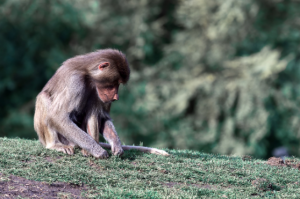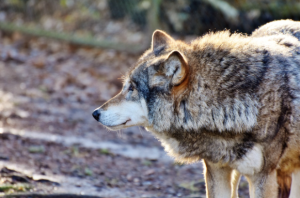Animal Behavior: Decoding the Language of Creatures
Animals have been communicating with each other long before humans even existed. But have you ever wondered what messages they are exchanging and how they understand each other? In this blog post, we will delve into the fascinating world of animal communication patterns. From decoding their secret signals to interpreting vocalizations, we will unravel the intriguing ways animals communicate non-verbally. We will also explore the dynamics of social interactions and hierarchies among different species, highlighting the complexity and diversity of their communication methods. Join us on this exciting journey as we decipher the language of the animal kingdom.
Understanding Animal Communication Patterns
Communication is a crucial aspect of any living being’s life, and animals are no exception. They use various patterns and signals to convey information and interact with one another. Understanding animal communication patterns is essential for researchers, wildlife enthusiasts, and even pet owners. It gives us insights into their behavior, social interactions, and helps us decipher their needs and emotions.
Animals communicate using a combination of verbal and non-verbal cues. Verbal communication involves the use of vocalizations such as calls, songs, or howls. Different species have distinct vocalizations that serve various purposes. For example, birds use melodic songs to attract mates or establish territories, while wolves use howling to communicate with their pack members over long distances.
In addition to verbal cues, animals also rely on non-verbal communication to convey information. This includes body language, facial expressions, gestures, and scents. These non-verbal cues play a crucial role in social hierarchies, courtship rituals, and territorial displays. For example, a dog wagging its tail signifies happiness and friendliness, while a raised tail indicates dominance or aggression.
To better understand animal communication patterns, researchers have conducted extensive studies. They have observed and documented the behaviors and signals of various species. This research has led to the discovery of specific communication patterns unique to certain animals. For instance, scientists have identified distinct dance-like movements performed by bees to communicate the location of food sources to their hive members.
- Intraspecies communication: Animals use communication to interact with members of their own species. This includes mating signals, establishing territories, and coordinating group activities.
- Interspecies communication: Some animals can communicate with different species. For example, symbiotic relationships between certain birds and mammals involve vocalizations that help them coordinate their actions.
- Context-specific communication: Animals adjust their communication patterns based on the situation or context. For instance, an alarm call might vary depending on the presence of predators or perceived threats.
| Animal | Communication Pattern |
|---|---|
| Dolphins | Use a series of clicks, whistles, and body postures to communicate with their pod members. |
| Gorillas | Express emotions and establish social hierarchies through vocalizations, body movements, and facial expressions. |
| Bees | Perform specific dance-like movements to indicate the location of food sources. |
| Elephants | Produce low-frequency rumbles that can travel long distances to communicate with other herds. |
Understanding animal communication patterns is an ongoing field of study. It not only helps us appreciate the complexity of their social interactions but also enables us to develop a deeper connection with the animal kingdom. By paying attention to the signals and cues animals use to communicate, we can better understand their needs, emotions, and behaviors. So next time you interact with an animal, remember to listen not just with your ears but also with your eyes and heart.
Unraveling the Secret Signals of Animals

Animals have long been known to communicate with each other, but the complexity and variety of their signals have often left researchers puzzled. However, recent studies have started to shed light on the secret signals of animals, allowing us to gain a deeper understanding of their communication patterns. By decoding these signals, scientists are uncovering a hidden world of animal communication that is both fascinating and enlightening.
One of the key findings in understanding animal communication is the use of vocalizations. Many species have unique calls that serve different purposes, from attracting mates to warning others of imminent danger. For example, birds use specific calls to mark their territory and find a mate, while dolphins and whales produce intricate series of clicks and whistles to communicate with their pod members over long distances. By studying and deciphering these vocalizations, scientists are able to identify different dialects and even specific meanings behind certain calls.
But animal communication is not limited to vocalizations alone. Non-verbal cues also play a crucial role in conveying messages between individuals. These cues can range from subtle body movements to elaborate displays that can be seen from miles away. Take the peacock’s extravagant feather display, for instance. This stunning spectacle is not only a visual treat for the eyes but also a signal to potential mates that the peacock is healthy and genetically fit. Similarly, the wagging tail of a dog can indicate various emotions, such as happiness, excitement, or even aggression. By observing and interpreting these non-verbal cues, researchers can gain insights into the intricate social dynamics and hierarchies within animal groups.
Another fascinating aspect of animal communication is the use of chemical signals. Many animals rely on scent to convey messages and mark their territory. For instance, wolves mark their territory by urinating on specific locations, leaving behind a distinct scent that other wolves can detect.
This chemical communication is not limited to marking territories; it also plays a crucial role in attracting mates. Insects, for example, release pheromones into the air to signal their readiness to mate. By unraveling these chemical signals, scientists are able to understand the complex social interactions and reproductive behaviors of various animal species.

In conclusion, the secret signals of animals are gradually being unraveled through scientific research. By studying their vocalizations, non-verbal cues, and chemical signals, scientists are gaining a deeper understanding of how animals communicate with each other.
This knowledge not only enriches our understanding of animal behavior but also has practical applications in conservation efforts and animal welfare. The more we uncover about the secret signals of animals, the more we realize the remarkable complexity and sophistication of their communication systems.
Cracking the Code: Interpreting Animal Vocalizations
Animals have always been intriguing creatures, and one of the most fascinating aspects of their behavior is their vocalizations. From the melodic songs of birds to the deep roars of lions, these sounds play a crucial role in animal communication. Understanding and interpreting animal vocalizations can provide valuable insights into their behavior, social dynamics, and even their emotions. In this blog post, we will explore the secrets behind these mysterious sounds and delve into the art of cracking the code of animal vocalizations.
Animal vocalizations serve multiple purposes, including mating calls, warning signals, territorial claims, and simply staying in touch with other members of their species. Different species have developed unique vocalization patterns that suit their needs and habitats. For instance, birds use complex songs to attract mates and defend their territories, while whales produce elaborate songs that can travel vast distances underwater. By deciphering these vocal cues, scientists have been able to gain a deeper understanding of the intricacies of animal communication.
One of the key elements in interpreting animal vocalizations is recognizing the variations in pitch, rhythm, and duration. For example, in the bird kingdom, each species has its own distinctive song, and even individual birds within the same species have their own unique variations. These subtle differences can convey important information about the bird’s age, sex, and overall health. By studying these variations and comparing them to known patterns, researchers can piece together a better understanding of the vocal language of animals.
- Spectrograms: Spectrograms are powerful tools that help visualize and analyze animal vocalizations. These graphical representations display the frequency, amplitude, and duration of sounds over time. By examining these spectrograms, researchers can identify different vocal signatures and gain insights into the meaning behind the sounds.
- Contextual Analysis: Interpreting animal vocalizations also requires considering the context in which they occur. For instance, certain vocalizations may indicate aggression, while others may signal the need for mating or the presence of danger. By observing the behavior of the animals alongside their vocalizations, scientists can decipher the specific messages being conveyed.
- Comparative Studies: Another effective method of interpreting animal vocalizations is through comparative studies. By comparing the vocalizations of different species or individuals within the same species, scientists can identify common patterns or unique characteristics. This comparative approach allows for a broader understanding of the universal principles of animal communication.

In conclusion, animal vocalizations are far more than random sounds. They are an intricate form of communication used by animals to convey vital messages and establish social connections.
By cracking the code of animal vocalizations through techniques like spectrographic analysis, understanding contextual cues, and conducting comparative studies, researchers can unravel the secrets behind these fascinating sounds. Through this understanding, we can gain a deeper appreciation for the complexity of the animal kingdom and the intricate ways in which animals communicate with one another.
Deciphering Non-Verbal Cues in Animal Behavior
Understanding animal behavior is a fascinating and intricate field of study. While verbal communication plays a crucial role in human interactions, animals rely heavily on non-verbal cues to convey their messages. These non-verbal cues include body language, facial expressions, gestures, and postures. By decoding and deciphering these cues, researchers and animal enthusiasts can gain valuable insights into the behavior and emotions of various animal species.
Non-verbal cues in animal behavior can vary greatly depending on the species and the context of the interaction. For example, a raised tail in a dog often indicates alertness or aggression, while a wagging tail signifies excitement or friendliness. Similarly, a flared mane in a lion indicates dominance and intimidation, while flattened ears indicate submission or fear. By understanding these signals and their meanings, we can better comprehend the intentions and emotional state of animals.
One of the most common non-verbal cues observed in animal behavior is body language. Animals use various body postures and movements to communicate with each other. For instance, a dog lowering its body and tucking its tail between its legs shows fear or submission, while an arched back and raised fur indicate aggression or readiness to attack. By paying attention to these subtle gestures, we can interpret the messages animals are trying to convey.
Another crucial aspect of non-verbal communication in animals is facial expressions. While humans rely heavily on facial expressions to convey emotions, animals also exhibit specific facial cues. For example, a bared teeth display in primates is a clear sign of aggression, while a relaxed and open mouth suggests a state of calm. Observing these facial expressions allows us to better understand the emotional states of animals and their intentions.
List of common non-verbal cues in animal behavior:
| Cue | Meaning |
|---|---|
| Raised tail | Alertness or aggression |
| Wagging tail | Excitement or friendliness |
| Flared mane | Dominance and intimidation |
| Flattened ears | Submission or fear |
| Lowering body and tucking tail | Fear or submission |
| Arched back and raised fur | Aggression or readiness to attack |
| Bared teeth | Aggression |
| Relaxed and open mouth | Calming state |
In conclusion, deciphering non-verbal cues in animal behavior is a fascinating and essential field of study. By understanding the body language and facial expressions of animals, we can gain valuable insights into their emotions, intentions, and social interactions. It is important to remember that these cues can vary across different species, and context plays an important role in interpreting them. Through careful observation and study, researchers and animal enthusiasts can unlock the secrets of non-verbal communication in the animal kingdom.
Exploring Social Interactions and Hierarchies Amongst Animals
When it comes to understanding social interactions and hierarchies amongst animals, there is a vast amount of fascinating information to uncover. Animals, like humans, have complex social structures and communication systems that play a crucial role in their daily lives. By observing their behaviors and studying their interactions, researchers have been able to gain valuable insights into how these social systems function. In this blog post, we will explore some of the key aspects of animal social interactions and hierarchies, shedding light on the intricate dynamics that exist within various species.
One of the fundamental aspects of social interactions amongst animals is the establishment of hierarchies. These hierarchies, also known as dominance hierarchies, are often created through various forms of competition, such as battles for resources, displays of strength, or intricate rituals. Within a hierarchy, individuals are ranked based on their power, status, or access to resources. The higher-ranking individuals enjoy certain privileges, such as priority access to food or mates, while lower-ranking individuals may have to defer to those above them in the hierarchy.
In many animal species, social hierarchies are hierarchical in nature, meaning that there is a clear pecking order within the group. For example, in a group of primates, the dominant individual will be at the top of the hierarchy, followed by the next most dominant individual, and so on. This hierarchical structure helps to maintain social order and minimize conflict within the group. Animals within a hierarchy often use various non-verbal cues, such as body language, facial expressions, and vocalizations, to communicate their social status and maintain their position within the hierarchy.

Understanding the intricacies of social interactions and hierarchies amongst animals can provide valuable insights into their behavior, population dynamics, and even conservation efforts.
For example, researchers studying social interactions amongst certain species of primates have found that the presence of a strong, stable hierarchy helps to reduce aggression and maintain social cohesion within the group. This knowledge can be applied to conservation efforts, ensuring that populations of these animals are properly managed and protected.
In conclusion, exploring social interactions and hierarchies amongst animals unveils a fascinating world of complex social structures and communication systems. By delving into the dynamics of animal societies, researchers gain valuable insights into the behaviors and interactions that shape their lives. Through their non-verbal cues and intricate hierarchies, animals navigate their social landscapes, establishing dominance and maintaining order within their groups. Understanding these dynamics not only provides us with a deeper appreciation for the natural world but also informs important conservation efforts aimed at preserving these remarkable creatures and their habitats.
Frequently Asked Questions
Question 1: How do animals communicate with each other?
Animals communicate with each other through a variety of means, including vocalizations, body language, scent marking, and visual displays. Each species has its own unique communication system, which has evolved to suit its specific needs and environment.
Question 2: What are some examples of animal vocalizations?
Animal vocalizations can range from simple calls and songs to complex patterns of sounds. Some examples include the howling of wolves, the chirping of birds, the roaring of lions, and the purring of cats. Vocalizations often serve as a means of attracting mates, defending territory, or warning of danger.
Question 3: How do animals use non-verbal cues in their behavior?
Animals rely heavily on non-verbal cues, such as body language and facial expressions, to communicate with each other. These cues can convey information about an animal’s emotions, intentions, and social status. For example, a submissive posture may indicate deference or a desire to avoid conflict, while an aggressive display may signal dominance or a readiness to defend oneself.
Question 4: Can humans understand and interpret animal communication patterns?
While humans may not be able to understand every nuance of animal communication, scientists have made significant progress in deciphering certain aspects of it. By studying animal behavior, vocalizations, and body language, researchers can gain insights into the meanings behind these signals. However, it’s important to note that there are still many mysteries to unravel and much more to learn.
Question 5: How do animals establish social hierarchies?
Animals establish social hierarchies through a variety of mechanisms, such as dominance interactions, aggressive displays, and ritualized behaviors. These hierarchies determine an individual’s rank within a group and influence access to resources, mating opportunities, and social privileges. The specific methods and structures of social hierarchies vary greatly among different species.
Question 6: Do animals have different communication patterns within their species?
Yes, animals within the same species can have distinct communication patterns that may vary based on factors such as age, sex, social status, and geographic location. These communication patterns can also evolve over time as a result of environmental changes or social dynamics within a group.
Question 7: What can we learn from studying animal social interactions?
Studying animal social interactions can provide valuable insights into the evolution of social behavior, the functioning of ecosystems, and even human society. By understanding the intricacies of animal communication and social hierarchies, researchers can gain a greater appreciation for the complexity and diversity of life on Earth.